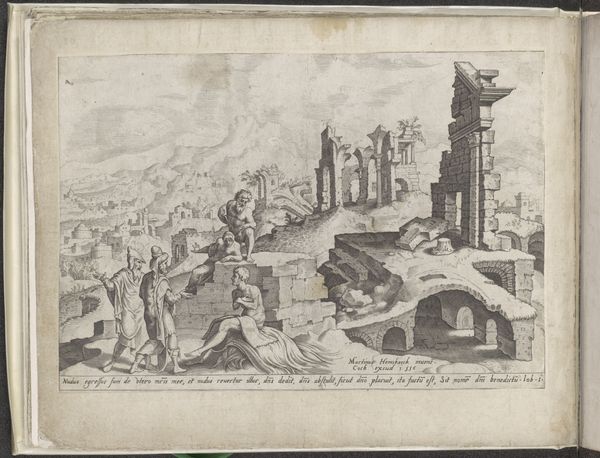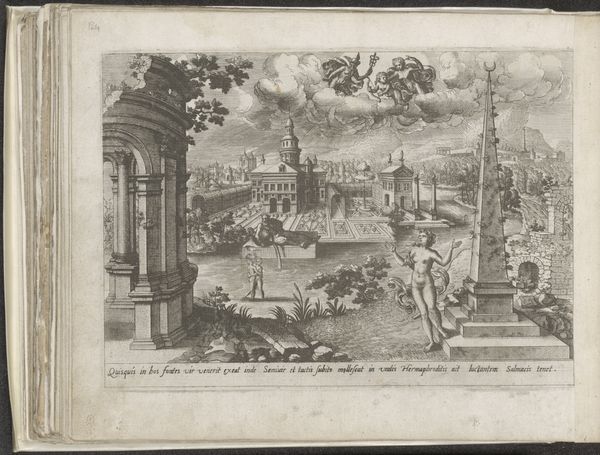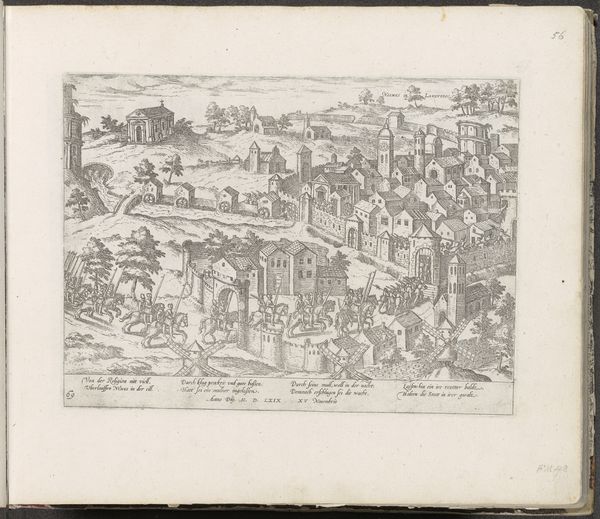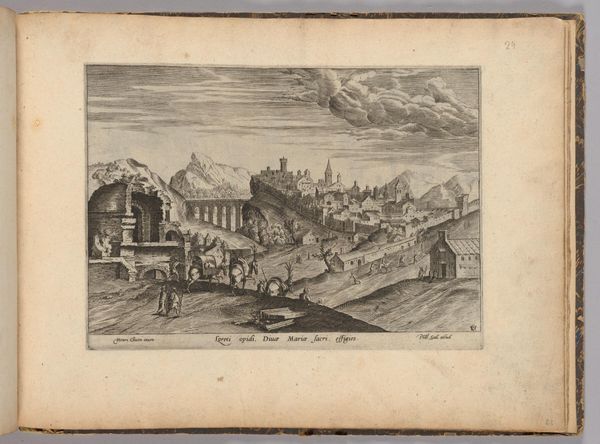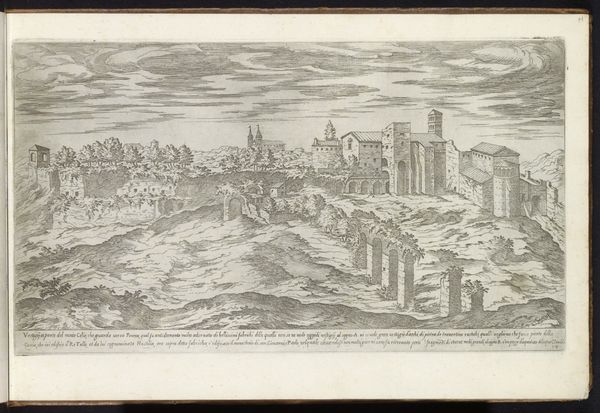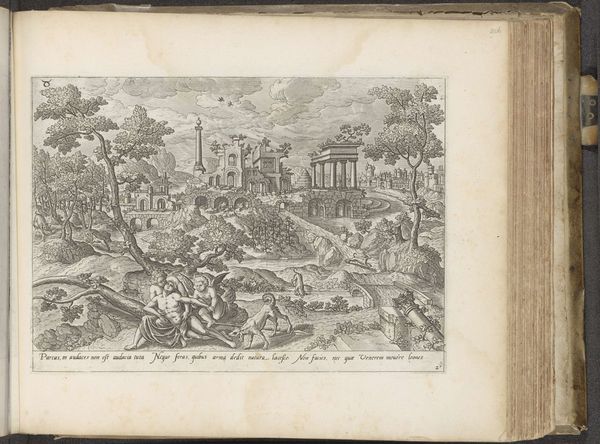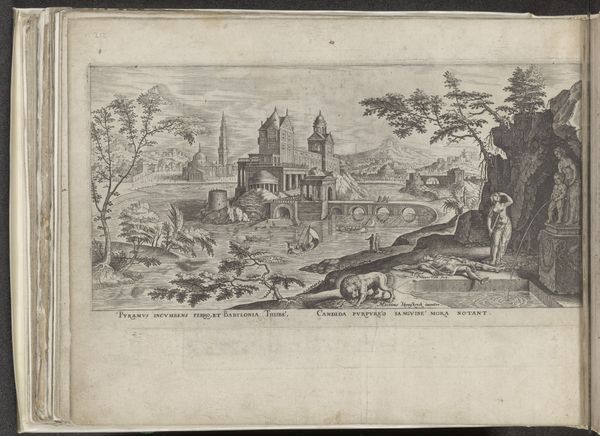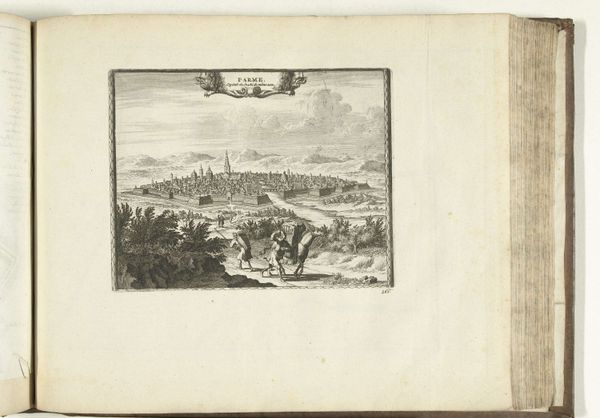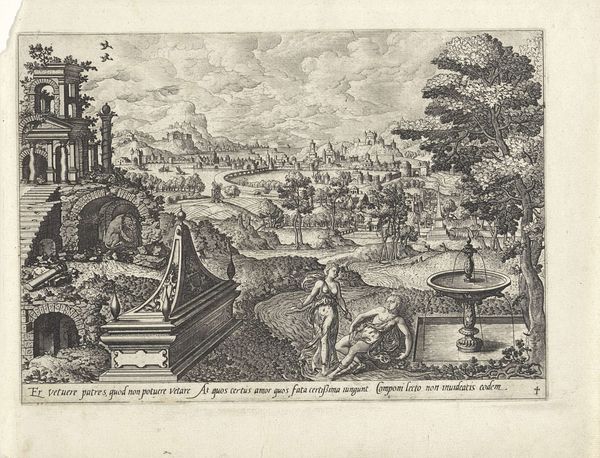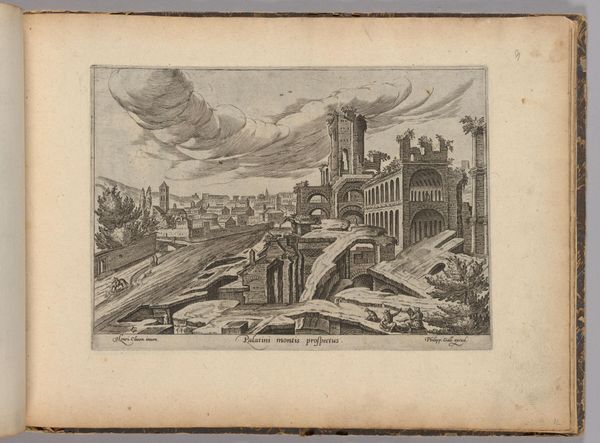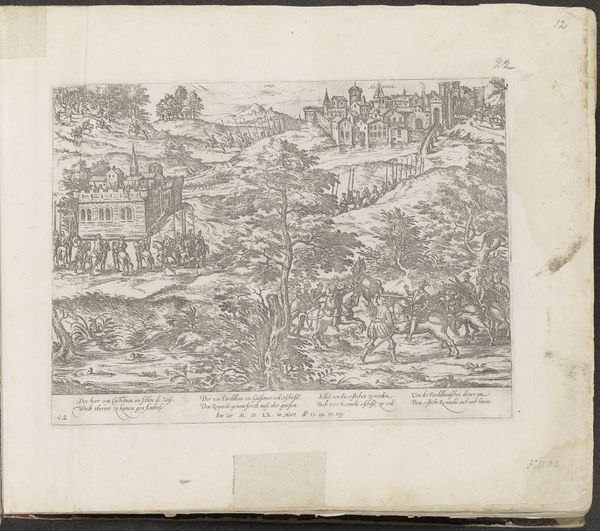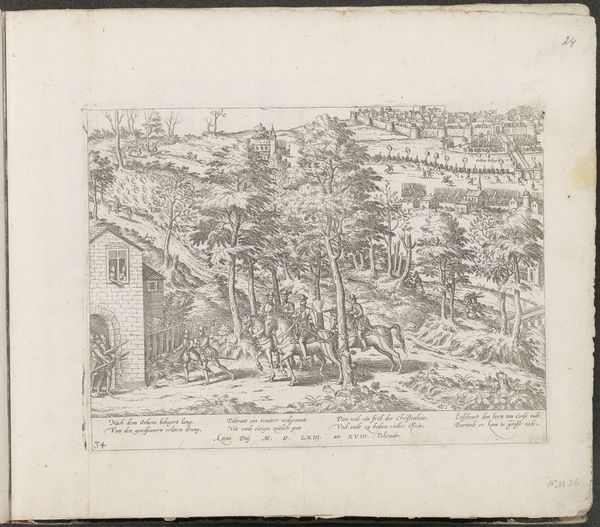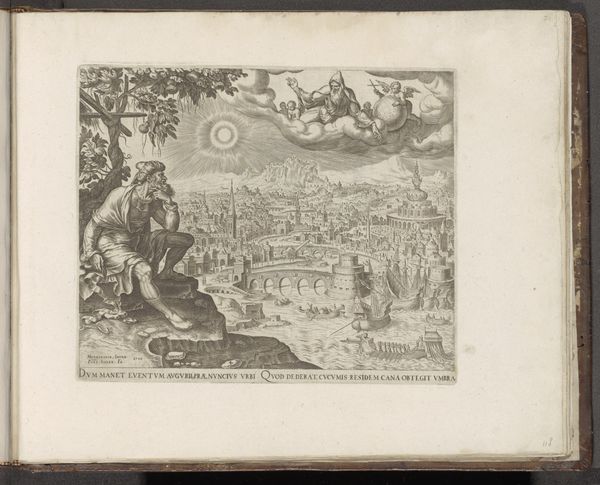
drawing, print, paper, engraving
#
drawing
# print
#
pen sketch
#
landscape
#
paper
#
11_renaissance
#
history-painting
#
northern-renaissance
#
engraving
Dimensions: height 203 mm, width 289 mm
Copyright: Rijks Museum: Open Domain
Curator: Welcome. We’re looking at “Pyramus and Thisbe,” an engraving crafted between 1570 and 1574, by Johannes and Lucas van Doetechum. The artwork is currently held here at the Rijksmuseum. Editor: It's astonishing how much story they pack into such a compact space! My first impression is melancholy; the delicate lines evoke such a potent sense of loss amidst the grandeur of the setting. Curator: Indeed. Let us focus on the engraving technique itself. Notice the density of the cross-hatching, particularly in the foreground. This creates a powerful chiaroscuro effect, drawing the viewer's eye towards the central figures while also constructing depth within the image plane. Editor: Right. It's like they’re using light and shadow to stage the drama. But the landscape isn’t just backdrop, is it? I see this almost fairytale city sprawling in the background... Did they intend to suggest that personal tragedies play out against this larger backdrop of history, against indifferent, thriving society? Curator: A viable interpretation. The city’s presence is integral. From a formalist perspective, this contrast of near and far generates a compositional tension, with elements from both the natural and the architectural worlds competing to engage our vision. Note how they've placed these forlorn figures in the context of monuments, ruins, and signs of prosperous architecture—all symbols for a fading classical grandeur. Editor: Grandeur doesn't necessarily imply success, I think. What if it underlines that societal beauty and strength can never prevent private heartbreaks? Even surrounded by exquisite architecture, these two met their ends. Makes me reflect on how external aesthetics and tangible items fail in comforting private sadness. Curator: A profound sentiment. Also notice the Latin inscription along the bottom edge: “Even their fathers could not prevent it, but a true love, which the truest of fates touched, rests in one tomb". The words augment the central theme with textual evidence of both loss and love's fortitude. Editor: You know, the artist successfully evokes a feeling that goes beyond this couple’s tale...it almost makes us feel something about every impossible romance in history! What an astonishing distillation of emotion onto a simple piece of paper. Curator: Indeed. Looking closer today has helped us understand that, from line weight to textual augment, there's little left to accident, in this striking Renaissance drama. Editor: I concur, it makes you think about love, loss, and time in very complex ways.
Comments
No comments
Be the first to comment and join the conversation on the ultimate creative platform.
